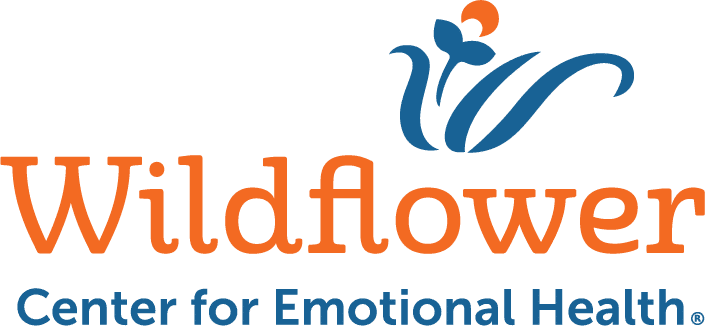Social media has revolutionized the way we interact and connect, enabling us to overcome barriers to education, activism, and community-building. However, it also drives hyper-consumption and can create a platform for harassment and misinformation. Recently, therapy has become a hot topic on social media. For instance, the hashtag #TherapyTok on TikTok has garnered 1.7 billion views, while #MentalHealth on Instagram has 49 million posts (English, 2023). It’s perfectly acceptable to seek insights and form a community related to therapy and mental health on social media. However, it’s essential to be mindful of potential pitfalls with the abundance of misinformation, misused terminology, and endless advice by self-proclaimed experts.
Therapeutic language has become increasingly common in everyday conversations, including on social media. This trend is called “therapy speak” and involves using mental health, therapeutic, or psychological terms to express emotions or experiences. While it can help people communicate more effectively, there is a risk of overusing and misinterpreting these terms. Therapeutic language can be misused in a way that manipulates or aims to control others, even without malicious intent. Often, people earnestly use this language to describe relationship dynamics, emphasizing the need for a deeper understanding. Psychotherapist and author Esther Perel sees “therapy speak” as a double-edged sword. While the normalization of therapy can help reduce stigma, the widespread use of therapeutic language may contribute to polarization. Perel warns about the danger of losing nuance when using therapy language casually, particularly online. Perel explains, “Labeling enables me not to have to deal with you. I do not like what you do, so I say you are gaslighting me. You have a different opinion, and I bring in a term that makes it impossible for you to even enter into a conversation with me.” (Shrikant, 2023)
Examining the prevalence of mental health misinformation on TikTok, Yeung et al. (2022) found that most of the content was “not scientifically accurate,” with some considered “potentially damaging,” such as videos that encourage using specific medications. ADHD had the highest rate of “potentially damaging” content, with over half containing information without scientific evidence. It was also discovered that the majority of content about autism makes highly misleading and generalized claims, such as assertions that people with autism hate to socialize. This raises significant concerns, as it could result in pathologizing ordinary experiences or symptoms of one disorder being wrongly associated with another, leading to incorrect diagnoses and ineffective treatments.
A word on “TherapyTok”
One subculture that has emerged on TikTok is the “TherapyTok” community, which comprises licensed therapists and self-proclaimed mental health experts. “TherapyTok” has become a digital phenomenon, where content creators share snippets of mental health advice, aiming to support and educate their audience. This trend reflects a growing demand for accessible mental health information, attempting to break down stigma and offer solace to those who might feel isolated in their struggles. While the intention is commendable, the execution and implications of “TherapyTok” warrant a closer examination. The following highlights some potential red flags to be aware of:
Lack of personalization: Mental health is deeply personal and influenced by an interplay of complex individual, social, and environmental conditions. Trauma, culture, genetics, socioeconomic status, stress, and relationships are some of the many factors that contribute to an individual’s mental health. “TherapyTok” content offers generalized advice that cannot possibly account for the nuances of individual experiences, potentially leading to misapplication of advice.
Oversimplification and misused terminology: The format of TikTok encourages short, engaging content, which can lead to the oversimplification of serious mental health issues, offering quick fixes rather than acknowledging the need for professional treatment. The drive for engagement can sometimes lead to sensationalism or the oversimplification of complex mental health topics to attract more viewers or sponsors. This can result in the dissemination of misinformation or incomplete information, which could mislead people about the nature of mental health issues and their treatment. Influencers without professional qualifications may inadvertently misuse diagnostic terminology, not only leading to misinterpretation, but turning mental health terms into buzzwords that dilute their actual meaning.
Ethics and accountability: While mental health influencers may have good intentions, there is no professional body overseeing their practice. This lack of oversight means there’s little recourse for addressing misinformation or unethical behavior. Licensed mental health professionals are bound by ethical codes and standards set by professional bodies, which include confidentiality, informed consent, and a commitment to do no harm. They can face professional disciplinary actions if they violate these standards. They must pass national and/or state licensing exams and fulfill ongoing continuing education requirements to maintain their license. This ensures they stay up-to-date with the latest research and ethical standards in their field.
Marketing and monetization: It is common for qualified mental health professionals to use their social media accounts to promote their books, courses, podcasts, and so on. However, things become murky when a mental health influencer’s sole income comes from monetizing their platform. Concerns arise when influencers do not transparently disclose their financial incentives or the commercial nature of their content. Audiences may not be aware that content is sponsored, leading to trust issues and challenges in discerning unbiased advice. This influence can detract from individualized care and evidence-based practices.
With the vast amount of information available online, it can be challenging to distinguish between reliable and unreliable sources of information. Unfortunately, algorithms often prioritize user engagement over facts, leading to the spread of misinformation. We must exercise caution and discretion while navigating these vast online resources to ensure that we receive accurate and dependable information.
Tips for evaluating content credibility
- Always check the qualifications and credentials of the person who created the content. The credentials of any licensed mental health professional can be easily found through a quick Google search. Trustworthy creators typically highlight their expertise and provide limitations to their advice.
- Cross-reference with credible sources to verify alignment with consensus in the mental health field.
- Look for references to peer-reviewed reviewed studies, evidence-based research, clinical guidelines, or statements from reputable mental health organizations. It’s crucial to be cautious of content that lacks sources or relies solely on anecdotal evidence.
- Be wary of content that contains buzzwords, promotes a specific treatment approach while ignoring the complexities of mental health, or uses scapegoating tactics to promote a message. Always evaluate such content with a critical lens.
Social media can provide valuable insights and connections but cannot replace professional diagnosis or treatment. When seeking personal advice or support, it is essential to consult a licensed professional who can offer guidance, expertise, and support beyond surface-level interactions on social media. Holistic care accounts for the physical, psychological, emotional, social, and spiritual components that shape our mental health and promote true healing. We all deserve treatment that goes beyond symptoms or diagnosis and addresses the whole person, allowing us to develop resilience, self-understanding, and overall well-being.
References
English, A. (2023, October 17). Social media has made therapy sexy, but what do we make of that?. Harper’s Bazaar Australia. https://harpersbazaar.com.au/tiktok-social-media-therapy/
Shrikant, Aditi. (2023, July 4). Therapy-speak is making US lonelier, says therapist Esther Perel: “there is a danger that you lose all nuance.” CNBC. https://www.cnbc.com/2023/07/04/therapy-speak-is-making-us-lonelier-says-esther-perel.html
Sodoma, K. A. (2022). Emotional Gaslighting and Affective Empathy. International Journal of Philosophical Studies : IJPS, 30(3), 320–338. https://doi.org/10.1080/09672559.2022.2121894
Starvaggi, I., Dierckman, C., & Lorenzo-Luaces, L. (2024). Mental health misinformation on social media: Review and future directions. Current Opinion in Psychology, 56, 101738–101738. https://doi.org/10.1016/j.copsyc.2023.101738
Yeung, A., Ng, E., & Abi-Jaoude, E. (2022). TikTok and Attention-Deficit/Hyperactivity Disorder: A Cross-Sectional Study of Social Media Content Quality. Canadian Journal of Psychiatry, 67(12), 899–906. https://doi.org/10.1177/07067437221082854


